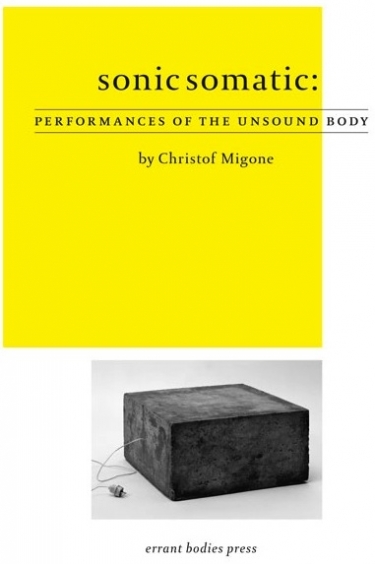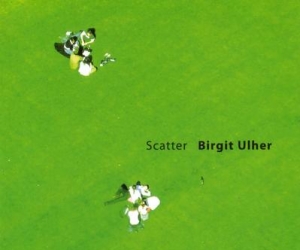
It comes as no surprise that the first word of Sonic Somatic is “Merdre!” Migone has long been a purveyor of bodily functions, putting out recordings of knuckle-cracks (Crackers, 1999), collected bottles of spit (Spit, 1997–1999), and crassly named music projects (Fingering, 2012). However, he is extremely capable of intellectualizing this rudeness into a legitimate body of knowledge, one fully on display in Sonic Somatic.
Migone takes the vibrato of the extra r in the above Merdre—pronounced as it is by Alfred Jarry’s Ubu—as an entry point into his discussion of the body as a punctuation point for language and sound—the body as both a generator and resonator of many of the variety of sounds, silences and noises discussed in the book. For Migone, the body is key to sound art because it leaks; the purity of sound is always disrupted because of our shuffles, stutters, farts, and coughs. For an art form still trying to define itself, this porosity allows for a multivalent approach to its possible definitions and an allowance for some of the underbelly to seep in.
The text manages to balance a strong through-line—from silence, through sound, language, space, and then death (back to silence)—with a densely layered series of art-and-sound historical reference points. At one point, as just one example, Christian Marclay shares a paragraph with Aristophanes, Artaud, and Pujol the Pétomane. Migone carves digressions into interesting arguments, allowing the weight of mounting evidence to create a dense case for the intrusion of bodily functions into the sound-art terrain. Despite its subject matter, it is hard to describe this book as irreverent, because Migone very deftly writes transgression into the history books. For all its excesses, it is very tightly wound.
In contrast, Fingering is live, loose, and lurid. It’s a two-LP set culled from Migone’s live solo performances over the last dozen years. His instruments of choice have been gutted-and-reworked reel-to-reel tape recorders, the reproductive equivalent of a prepared piano. He “plays” them with contact mikes, sticking them into the cavities of the machines’ bodies as they run, creating a live collage out of a searching, textured noise and the slips and slurs of the machine.
The results are very tactile. The title Fingerings implies a certain embodied application; perhaps even a borderline explicit one, and the sound recordings share similar tawdry textures. The recordings are surprisingly intimate, despite the fact that they document live performances. One senses by the audiences’ stillness that they sit rapt in the erotic charge, likely aided by Migone often utilizing a live video-feed in his performances to amplify his actions.
The slurpy, tetchy noise of Fingerings makes it the perfect audio companion to Migone’s book. Migone is somehow able to make the machine sound fleshy and alive, creating a borderline disturbing listen (a special accomplishment for a noise record that isn’t mastered at the usual extremely high volume). But it is the last side of the two-LP set that connects most directly back to his book. A series of words (fingers and in) are edited down to just the sound of saliva forming on lips and tongue, before and after the word is stated. At each point, a voice is trying to speak, but only the absence of language and the presence of body is heard.


